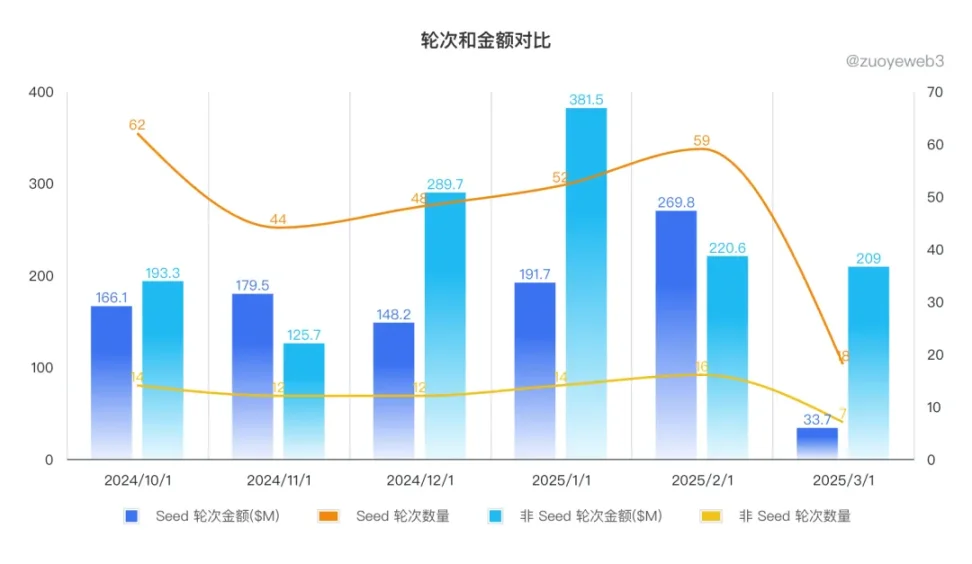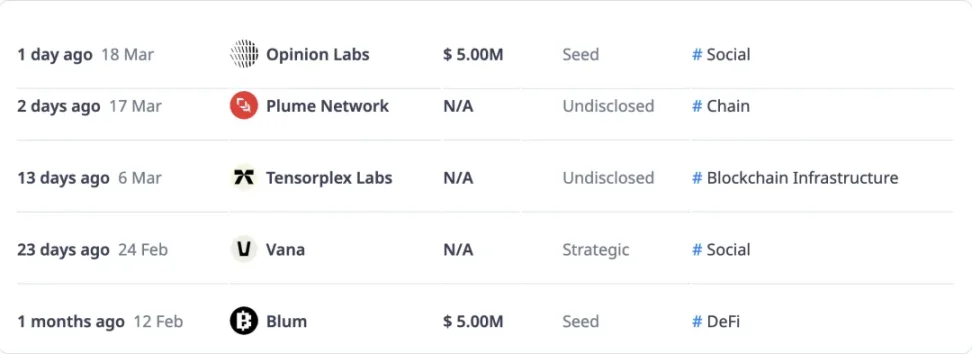VC is probably indeed dead. Web2 venture capital is unwilling to take risks and only invests in the government's industrial guidance fund. The Web3 Seed round was well received but not popular. VC and FA further reversely merged, and starting a business towards Binance became an industry consensus. All insights and memos were transformed into information in exchange for Yap.
From the overall perspective, more and more large VCs are beginning to enter the project token issuance, and are using the secondary method to build the primary dream. This is different from early equity investment, initial coin offering IXO, and stock/coin dual models. The market is rapidly entering a mature stage, but it requires further sacrifices of small VCs.
After CZ's comeback, he took investment as the orientation, education as the slogan, tweeting as the main body, and all-in BNB Chain Meme as the main business. Binance Labs was renamed YZi Labs on January 23, and it has more and more the feeling of a Family Office.
The aversion to risk and preference for investment stability is not only about investing in late-stage and mature stocks, but also about the increasingly bland exploration of projects. Taking YZi Labs as an example, we can look at the investment style of turning new money into old money, so that everyone can learn in advance how to change their style after getting rich.

Data source: Decentralised Co., graphics: @zuoyeweb3
Under normal circumstances, there should be a large number of seed rounds and large amounts in subsequent rounds.
However, judging from the data of the past six months, the number of seed rounds is not as overwhelming as that of A/B/C rounds, and the amounts of both sides are very close. The disappearance of encryption rounds is a reality. Those who can get small money will continue to get small money, and those who can't get money will never get any.
Invest in AI when it is cold and hype in Meme chain season
Regardless of Web2/3, AI is currently a bit unpopular, but CZ feels that it is not enough. He hopes that it will continue to cool down before taking action, leaving only the real builders and the most devout believers.

Image caption: YZi investment targets, Image source: CryptoRank
However, YZi’s direction does include AI. In fact, most projects can be linked to AI, so they can be divided into “using Crypto to do AI”, such as Vana and Tensorplex Labs, and “using AI to do Crypto”, such as Plume Network, Blum and Opinion Labs.
Of course, this is just a forced classification and has no guiding significance. In the era of AI-assisted postpartum care for sows, there is no need to worry about how necessary AI is.
In chronological order, let’s review the features of each project one by one.
1. Opinion Labs =Kaito + Polymarket
Opinion Labs is a so-called human opinion-driven prediction market. I would boldly guess that its future development direction will be based on the predictions and transactions of Twitter KOLs. It can take advantage of the InfoFi concept and the enduring trading attributes, and can be used for both offense and defense.
2. Plume Network = Everything is RWA
RWA is not a new concept, but Plume Network’s experience is very legendary. It not only received $30 million in financing from top institutions such as Galaxy, but also chose Gate for IEO in January this year, and then received investment from YZi, which caused the price of the currency to rise.
Being calm and flexible is the working style of the currency circle after being polished. Issuing coins first and subsequent financing are the opportunities of the times given by Crypto.
3. Tensorplex Labs = LSD + AI
First of all, I think decentralized AI is a pseudo-concept. Tensorplex Labs wants to use LSDfi to ensure the decentralization of LLM training and data sets, which has no productivity significance. However, when Crypto is eager to do something for AI, it is not uncommon to get money from investment institutions in the circle.
This is meaningful for the future price of the currency. After all, the product is the product and the price of the currency is the price of the currency. Otherwise, ADA and XRP will be extremely ashamed.
4. Vana = AI concept coin that spans cycles
It got Polychain in 2021, Paradigm in 2022, Coinbase in 2024, and YZi Labs in 2025, and has successfully landed on Binance Launchpool.
It is a very typical VC coin from the last cycle. It has no reference value for current and future projects. I can only say that I am very envious.
5. Blum = Sole Seed + Trade
This is the most typical Binance Labs investment style, a transaction-oriented DeFi product, and it is also a rare seed round player. The most surprising thing is that OKX and YZi jointly invested, which can be said to be brothers who have gone through all the hardships together and will not separate when going overseas.
Please forgive me for not introducing too much about the project mechanism and token economics, because it is meaningless. What are the fundamentals of Meme, what is the difference between the community and the cryptocurrency trading group, and the role of token economics, I call them the three unsolved mysteries of the cryptocurrency circle.
Meeting the aesthetics of family offices, stability overrides everything
YZi is typical enough and the domestic public is relatively familiar with it. However, after the wealth-making wave of 17-21, Crypto New Money has gradually transformed into an Old Fashion financing institution such as a family office, which does not seek a super high rate of return, but cares more about project stability.
Two years earlier than CZ, Arthur Hayes, the founder of the first-generation contract king BitMEX, established his own family office Maelstrom. The funds came from Arthur personally. Similar to CZ's recall of Ella Zhang, the daily operations of Maelstrom were handled by Akshat Vaidya, a former executive of BitMEX.
Facts have proved that Arthur Hayes can develop perpetual contract products that are more suitable for cryptocurrency enthusiasts, and he also has a unique aesthetic in investment. For example, Ethena, a stablecoin in the post-UST era, officially took the first step in reverse exchange fees with on-chain products, and Pendle, a cross-era DeFi product.
The complete story about Arthur Hayes will be presented in a long article later. He is an OG who is more worthy of learning than Sun Ge and CZ.
However, similar to YZi, Maelstrom also pursues stability. For example, it does not invest in Meme, but invests more in Meme-related tools and infrastructure, such as Time.Fun. It emphasizes that success or failure is not determined by ROI, and adheres to the stability style first.
However, YZi's style is far from fixed. In Binance Labs' past performance, the Binance main site was an extremely attractive barrier, but now the landlord has no surplus food. At the end of 2024, it has begun to transfer the invested project tokens to Gate. After all, Gate bears everything.
Unlike Arthur Hayes who can be the spokesperson for Ethena, CZ has not yet been deeply bound to a project, and YZi has not formed his own investment aesthetics. As mentioned above, Binance Labs is very fond of investing in trading products, but in the post-DeFi profiteering era, Ethena and Pendle will only be a minority, and most are Crypto+AI coin-selling projects. The scraps of Web2 AI, the little pride of Web3 AI.
In addition to being increasingly detached from the Binance ecosystem, YZi's true strength still needs to be tested by the market, and this especially tests CZ's personal investment level. Judging from the fact that his AI has not yet cooled down and he developed the BNB Chain Meme ecosystem after $TRUMP, I personally feel that it is not as sophisticated as his guidance of Ben Zhou to refuse users from withdrawing coins and accurately seize the OKX DEX market share.
However, this may also be related to the fact that CZ really does not engage in trading, but only provides a trading platform.
Conclusion
The world of yesterday is gone forever.
Crypto venture capital really took off in the IXO era and reached its peak before the collapse of FTX (I have to mention SBF every time, it really changed the industry trend single-handedly). Now it is just the finishing process of completing the established investment projects, enduring the criticism from retail investors, and striving to distribute all the coins.
There is no such thing as crypto VC in the world. When more money is invested, there will be risks.





